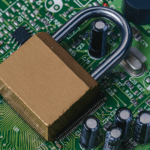Artificial intelligence (AI) and machine learning (ML) have made enormous strides in recent years, transforming industries and improving a wide range of applications.
Traditional computing architectures are having a difficult time keeping up with the rising demands for processing power, speed, and energy efficiency as AI and ML models become more complex and data-intensive.
Hardware accelerators have come to light as a possible way to overcome these issues and improve the efficiency of AI and ML workloads.
An in-depth analysis of FPGA technology will be covered in this article on “Accelerating AI and ML with FPGA,” and we’ll also learn why FPGA-based acceleration is becoming more and more popular for use in AI and ML applications.
We’ll look at how FPGAs can bypass the limitations of traditional hardware to enable quicker and more power-efficient computations.
Accelerating AI and ML
The need for strong and effective hardware is increasing along with the need for AI and ML. Here, FPGA can completely transform the game. A great option for boosting AI and ML is a chip known as an FPGA, or Field Programmable Gate Array, which can be configured to carry out particular tasks.
The capacity of FPGA to handle massive datasets and sophisticated algorithms in real-time with high speed and low latency is one of the main advantages of adopting FPGA in AI and ML applications.
As a result, using FPGA, complicated activities that would normally take hours or even days to perform on a CPU or GPU can be completed in a matter of seconds.
FPGAs are far more flexible and adjustable than CPUs and GPUs, enabling better control over the hardware and performance improvement.
Additionally, FPGAs offer even greater parallel processing capabilities with less power consumption than GPUs, which have historically been the preferred choice for parallel computing.
FPGAs have a lot of potential for boosting AI and ML applications, but they also present a unique set of difficulties.
The co-design of hardware and software as well as an in-depth understanding of FPGA programming are necessary for designing intelligent systems with FPGA. Additionally, there is a demand for qualified experts that can efficiently program and optimize the hardware.
The future of FPGA in AI and ML applications appears promising despite these difficulties. The need for effective and adaptable hardware solutions is increasing along with the demand for intelligent systems and real-time processing.
Additionally, there are countless opportunities for acceleration and optimization thanks to continual advancements in FPGA technology.
Designing Intelligent Systems with FPGA
It takes a thorough understanding of hardware and software co-design to develop intelligent systems with FPGA. Intelligent systems can perform much better when hardware and software are integrated seamlessly. Such co-design is made possible in large part by the Field-Programmable Gate Array (FPGA). Its capacity to provide high performance, flexibility, and low latency for a variety of embedded applications has earned FPGA recognition.
Hardware customization is one of the main advantages of FPGA in AI and ML. The hardware can be modified using FPGA to enhance the performance of AI and ML algorithms.
Hardware accelerators, which can greatly increase processing speed and efficiency, can be used to achieve this improvement. Additionally, specialized neural networks that are created following the demands of the application can be implemented using FPGA.
Applications of FPGA for accelerating AI and ML
FPGAs (Field-Programmable Gate Arrays) have found widespread adoption in accelerating AI and ML applications due to their unique characteristics, which enable high-performance and energy-efficient computations. Let’s explore some of the key applications where FPGAs excel in accelerating AI and ML:
1. Real-time Inference at the Edge:
- Edge computing requires instantaneous decision-making independent of cloud-based servers. Due to their low latency capabilities and capacity for parallel data processing, FPGAs are well suited for real-time AI inference at the edge.
- They are used in IoT devices, autonomous vehicles, smart cameras, security systems, and surveillance systems to enable quick and context-aware reactions.
2. Natural Language Processing (NLP):
- NLP activities are computationally demanding because they process extensive language models and neural networks.
- By handling complicated model designs well, FPGAs offer considerable benefits for NLP acceleration, resulting in quicker and more accurate language processing.
- Applications like voice recognition, chatbots, and sentiment analysis are accelerated by this.
3. Computer Vision:
- For computer vision applications like object identification, image segmentation, and facial recognition, FPGA-based acceleration is quite helpful. FPGAs are a great option for vision-based applications in autonomous systems, robotics, and surveillance due to their parallelism and customizability, which allows these algorithms to be optimized for real-time performance.
4. Recommendation Systems:
- To offer suitable content, goods, or services, online recommendation systems evaluate enormous volumes of user data.
- These systems can process and respond to customer requests more quickly because of FPGA acceleration, which enhances user experiences and boosts user engagement on platforms like streaming services and e-commerce websites.
5. Speech Recognition:
- Accelerating speech recognition applications using an FPGA is extremely advantageous, including voice assistants and speech-to-text systems. Voice-based interactions are made possible by FPGAs’ speedy processing of audio input and the application of sophisticated neural network models for quick and accurate speech recognition.
6. Genomic Sequencing and Bioinformatics:
- Bioinformatics is the study of enormous genetic datasets. High-throughput and low-latency processing capabilities provided by FPGAs are essential for DNA sequence analysis, variant calling, and alignment of genomic data.
- Tools for bioinformatics that are accelerated by FPGAs help advance genetic research and customized treatment.
7. Financial Modeling and Trading:
- Fast analysis and decision-making are crucial in the financial markets. FPGAs shorten trading execution times and speed up the execution of algorithmic trading methods and sophisticated financial models.
- Applications for high-frequency trading and risk assessment make use of this technology.
8. Deep Learning Training:
- For deep learning training, GPUs are frequently utilized, although FPGAs are also advancing.
- To shorten training periods and improve energy efficiency for particular types of models, especially those employed in specialized areas, FPGA-based training accelerators are being created.
9. Video and Image Processing:
- FPGAs are used in multimedia applications to speed up video and picture processing operations such as video encoding, decoding, and transcoding.
- For applications in video streaming, broadcasting, and video surveillance, FPGA-based solutions are the best choice because they provide effective parallel processing and real-time video analytics.
10. Virtualization and Cloud Services:
- In cloud data centers, FPGAs can be used to speed up AI/ML applications, giving users better performance and cheaper operating costs.
- For consumers across several industries, cloud services with FPGA support provide resource-efficient and on-demand AI/ML processing.
Conclusion
After examining the advantages and difficulties of using FPGA to accelerate AI, it is obvious that this technology can completely transform intelligent systems. FPGA can improve the performance and effectiveness of AI operations across a variety of industries because of its ability to combine hardware and software. The future of AI and ML appears more promising than ever as smart experts continue to invent and improve FPGA technology.


![What is FPGA Introduction to FPGA Basics [2023] computer-chip-dark-background-with-word-intel-it](https://fpgainsights.com/wp-content/uploads/2023/06/computer-chip-dark-background-with-word-intel-it-300x171.jpg)









